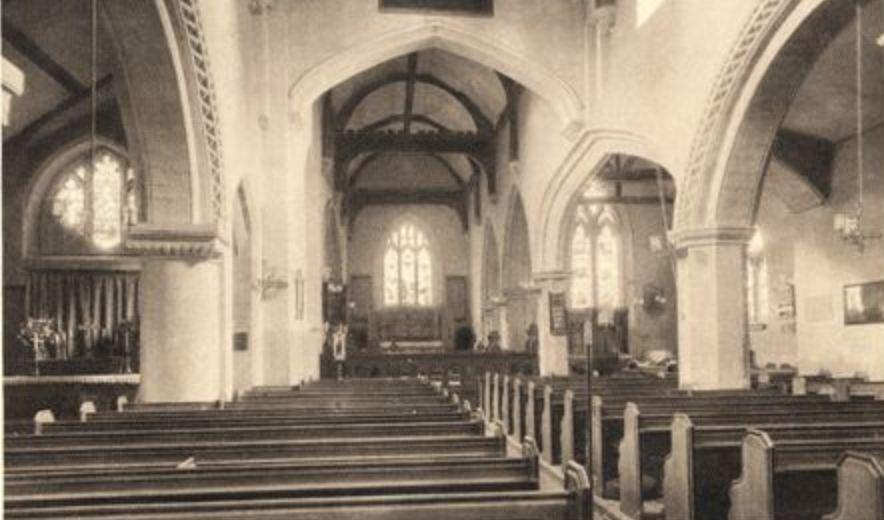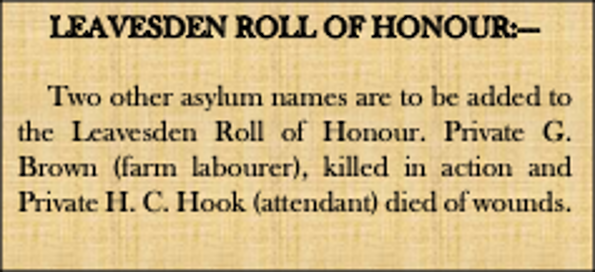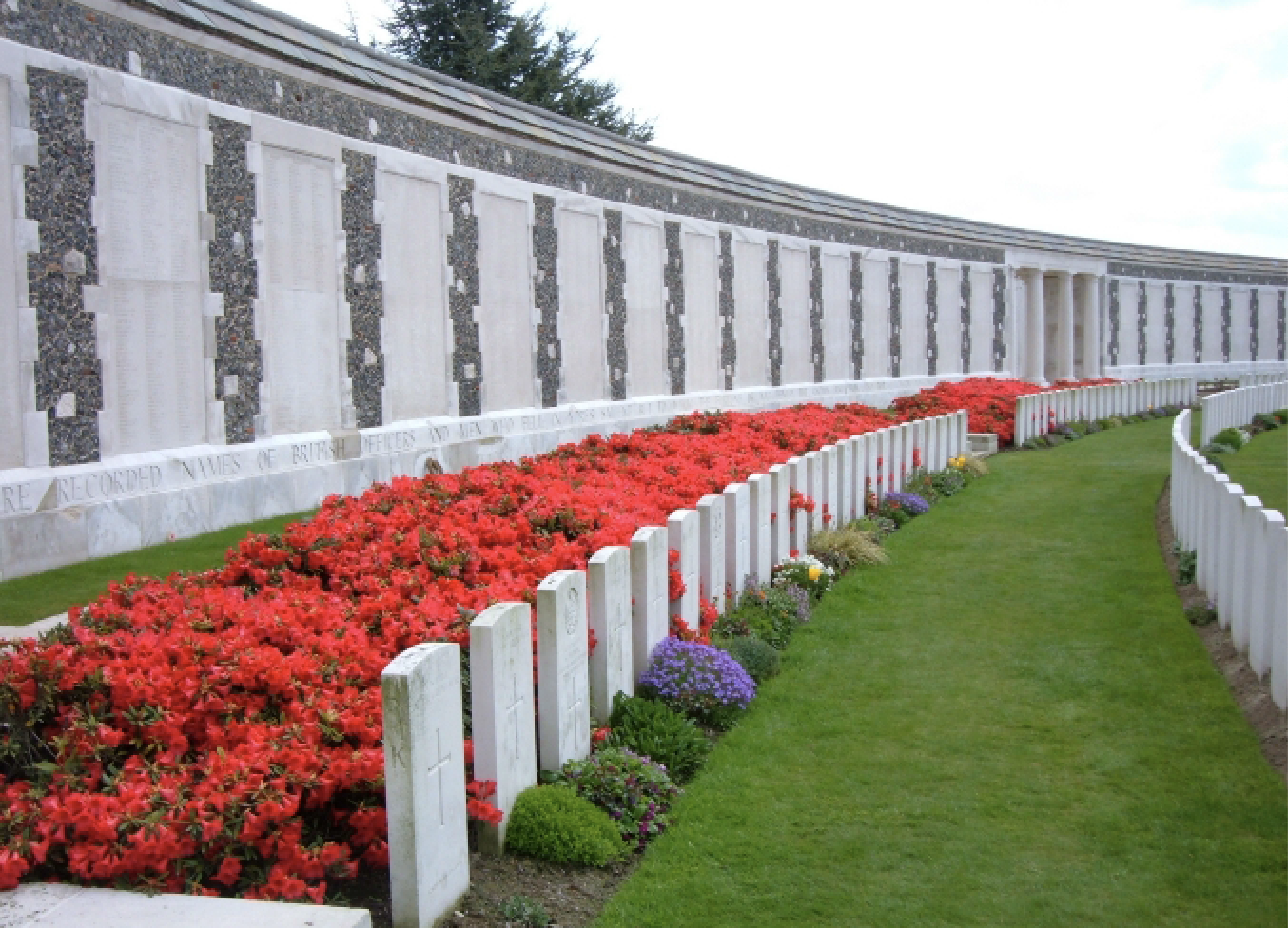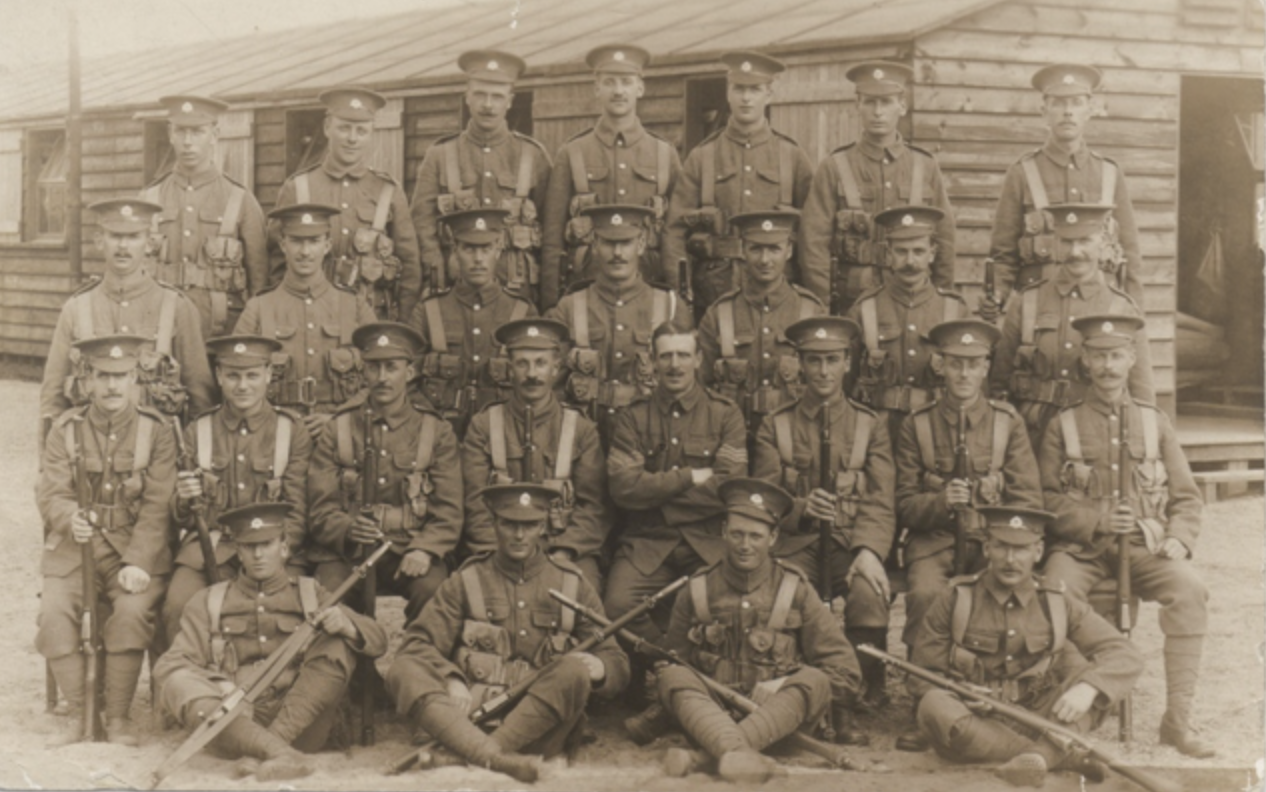Fallen in February 1918:
George Brown
Frederick Room
GEORGE BROWN
65492 Private
110th Coy., Labour Corps
Killed in Action Saturday, 16th February 1918
Remembered with Honour, Tyne Cot Memorial, West Vlaanderen, Belgium, Panel 160 and 162A and 163A.
George Brown was born on Cherry Tree Lane, Wood End near Redbourn, Hertfordshire in 1876 and baptised on 7th January 1877 at St Mary’s Church in the village. He was the fourth child born to James Brown and Mary Ann Moody who had eleven children who were: James, William, John, George, Rose, Arthur, Mary, David, Frederick Ellen and Annie.
In 1882 George’s family moved a short distance to Westwick Row and he started at the local school in nearby Leverstock Green at the age of five. When he left school seven years later, he started work as an "Agricultural Labourer" and around 1894 moved with his family once more to nearby Bedmond and a house on East Lane.
At the time of the 1901 census, both George and his father James are recorded working as "Horsemen" on a nearby farm. The following year he married Elizabeth Allen, originally from Barton-le-Clay in Bedfordshire, who had grown up at High Woodhall Farm, near Redbourn. Their marriage took place at St Lawrence Church in Abbotts Langley on Saturday, 6th September 1902.
They produced a large family together and the children were: Minnie Florence born in 1903, then Henry George in 1905, followed by a second daughter Dorothy May in 1906. Arthur Ernest was born in 1907, and then David William in 1910 and Frederick James in 1911. Their last three children all boys; Horace born early in 1912 Albert in spring 1913 and finally the youngest Francis, born late autumn in 1914.
By the time of the 1911 census, George had found work at nearby Leavesden Asylum and he was one of 165 men who volunteered from this establishment during the Great War.
George joined the Colours under the Group (Derby) Scheme in 1915 when he went to London and attested at Embankment on the 29th November, and on the promise of service, was posted to the Army Reserve. He was categorised in "Group 44" which meant that his call up and mobilisation came in June 1916, when he returned to enlist with the Queen’s (Royal West Surrey Regiment).
George’s service record reveals that on enlistment he was 5 feet 4 inches in height, weighed 118 lbs (8st 6lbs), had a 33 inch chest and was deemed to have “Fair” physical development. It also notes that he had “Flat Feet”, but this was not considered deficient and he was passed fit for military service. It was probably due to his occupation coupled with his physique and flat feet that he was marked out for one of the infantry labour companies and this seems to be confirmed by his postings.
He trained with the ‘Queens’ but when he went oversea on the 8th November 1916, it was with the 2nd Infantry Labour Company attached to the Middlesex Regiment. Following the creation of the Labours Corps in early 1917, he was transferred to 110th Company on the 9th May 1917.
The Labour Corps cooked, cleaned, carried and cared for the soldiers on the front line and behind the lines. They built roads and railways, carried the wounded and buried the dead. Men and women from across the Commonwealth made a vital contribution to the war effort as workers. These volunteers often worked within the range of enemy guns and many were wounded and killed, but unlike other soldiers who fought, they often went unacknowledged.
The "Unremembered Project" was initiated in 2018 in a celebrity-backed campaign to remember “forgotten” heroes of the First World War who served in the Labour Corps.
Army Council Instruction 611 stated that units of the Labour Corps would not be required to maintain a war diary unless the Commander-in-Chief concerned authorised otherwise. This, and the fact that the nominal rolls and other documents were destroyed in the Arnside Street fire in 1940, makes researching a man of the Labour Corps difficult and producing a good analysis of his story a rather sketchy affair.
This means that researching George’s time overseas cannot be precise, although what is known is that he died somewhere on the Ypres Salient. How he was killed is not recorded, other than his surviving military records stating, “Killed in Action”.
George died on Saturday, 16th February 1918.
After he was killed the Hemel Gazette published a brief report. (see extract)
This was followed by a further article in the Gazette in April 1918 reporting names added to the Leavesden Roll of Honour. (see extract)
He was commemorated on the Leverstock Green War Memorial in the village.
George is Remembered with Honour on Tyne Cot Memorial, West Vlaanderen, Belgium, Panel 160 and 162A and 163A.
He was 41 years old when he died.
George was eligible for the British War Medal and the Allied Victory Medal.
Interior of St Lawrence Church, Abbots Langley where George and Elizabeth married in 1902 (Photo: http://www.hertfordshire-genealogy.co.uk)
Leavesden Asylum where George was employed c1905 (Photo: Peter Higginbottom)
Extract from The Hertfordshire, Hemel Hempstead Gazette and West Herts Advertiser 16th Mar. 1918
Extract from The Hertfordshire, Hemel Hempstead Gazette and West Herts Advertiser 6th Apr. 1918
War Memorial, Leverstock Green, Hertfordshire (Photo:Traquair Photography)
Tyne Cot Memorial, West Vlaanderen, Belgium (Photo: CWGC)
FREDERICK ROOM
22741 Lance Corporal
4th Bn., Bedfordshire Regiment
Killed in Action Wednesday, 20th February 1918
Remembered with Honour, Thiepval Memorial, Somme, France, Pier and Face 2 C.
Frederick Room was born in 1888 in Dunstable, Bedfordshire the third child born to Samuel Room and Elizabeth Bandy who had a family of eight together. The children were: Lily, Samuel, Frederick, Edith, Willie (William) James, Arthur, Frank and Kate. His mother Elizabeth died in 1902 and his father married a second time to Elizabeth Janes, with whom he had another child named Freddy.
Frederick’s younger brother Willie was killed just a month after him on the 25th March 1918, when fighting with the Royal Welsh Fusiliers. His brother-in-law, Alfred Luck was also killed in the Great War in 1916 and his biography appears on this site.
In 1901, Frederick aged thirteen, worked as a "Metal Sorter", whilst his father, mother and older brother all worked in hat making, a major source of employment in the Luton and Dunstable area for over 200 years.
By 1911 he had moved to the Hemel Hempstead area and was living with his in-laws at 6 Two Waters Road, Boxmoor and working as a "Rag Sorter" for George Joseph Deacon on the Marlowes.
He had married Edith Amy Luck in 1908 and soon afterwards, they had their first child Frederick, who sadly died shortly after his birth. Better news followed and in 1911 they had a daughter called Annie. She was followed a year later by Henry Frederick and finally in 1916, Frederick Charles arrived.
It is not known when Frederick enlisted but it was probably in 1915 under the Group (Derby) Scheme or following the passing of the Military Service Act in 1916. He did not go to France before July 1916 because that is when his unit, the 4th Battalion Bedfordshire Regiment, was send to the Western Front.
Assuming he was in France in 1916, he would have fought at the Battle of Ancre in November, the final phase of the Somme offensive where the 4th Bedfordshires lost 190 men.
In 1917 he would have seen action at Arras in the Second Battle of the Scarpe in April and again in the Second Battle of Passchendaele in October. Once more these encounters resulted in heavy casualties for the Battalion; 274 at the Scarpe and 264 at Passchendaele.
Having come through the horrors of Passchendaele, the 4th Battalion marched back to France and billets near Metz and then to Beaulencourt south of Bapaume in late January. During the first two months of the year, Frederick spent time in the trenches but mercifully, it was a relatively quiet spell and casualties were light during the month.
On the 19th February, the 4th Bedfordshires were relieved following a tour of duty in the trenches and the Battalion War Diary simply records “1 O.R. Killed”
This casualty was in fact Frederick, but no information is available to explain the circumstances of his death. However, given he was the only soldier to die, it may well have been the work of a German sniper.
His official death date was Wednesday, 20th February 1918.
Frederick is Remembered with Honour on Thiepval Memorial, Somme, France, Pier and Face 2 C.
He was 30 years old when he died.
Frederick was eligible for the British War Medal and the Allied Victory Medal.
"Two Waters" near Apsley where Fred and Edith lived (Photo: https://maps.nls.uk)
Bedfordshire Regiment Cap Badge WW1 (Photo: Public Domain)
Men of the 4th Bn., Bedfordshire Regiment in 1916 (Photo: http://www.bedfordregiment.org.uk)
Thiepval Memorial, Somme, France (Photo: CWGC)








